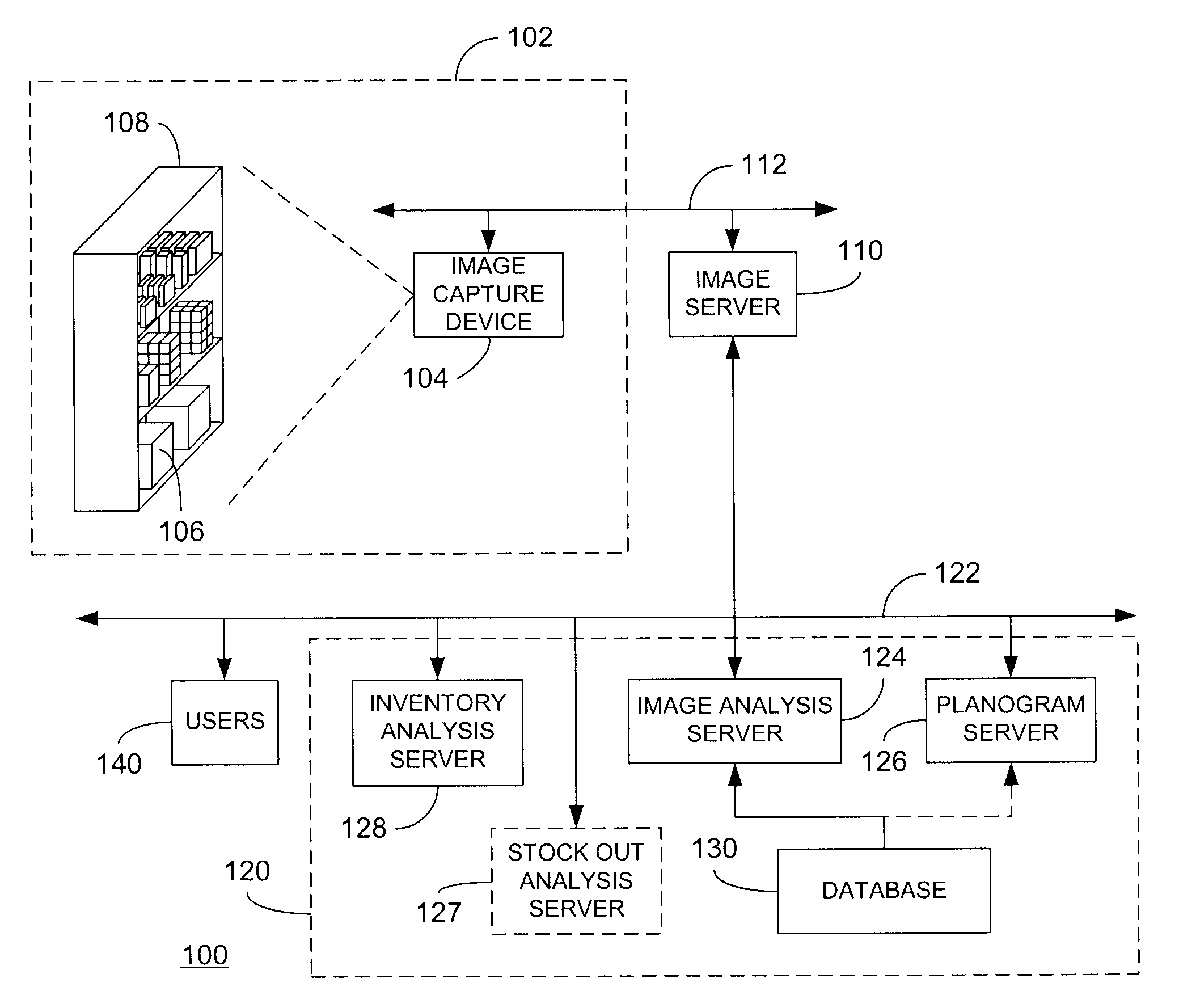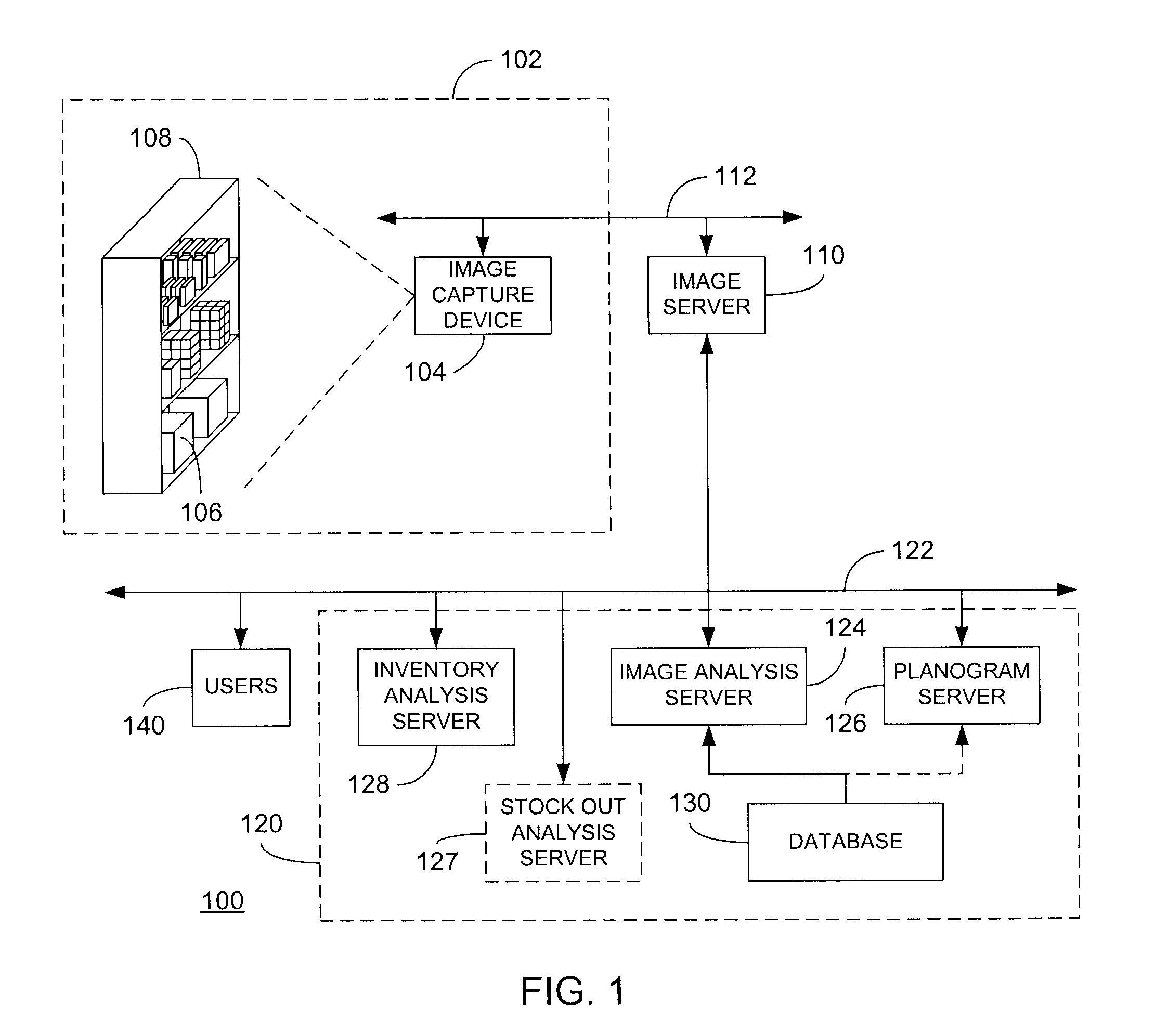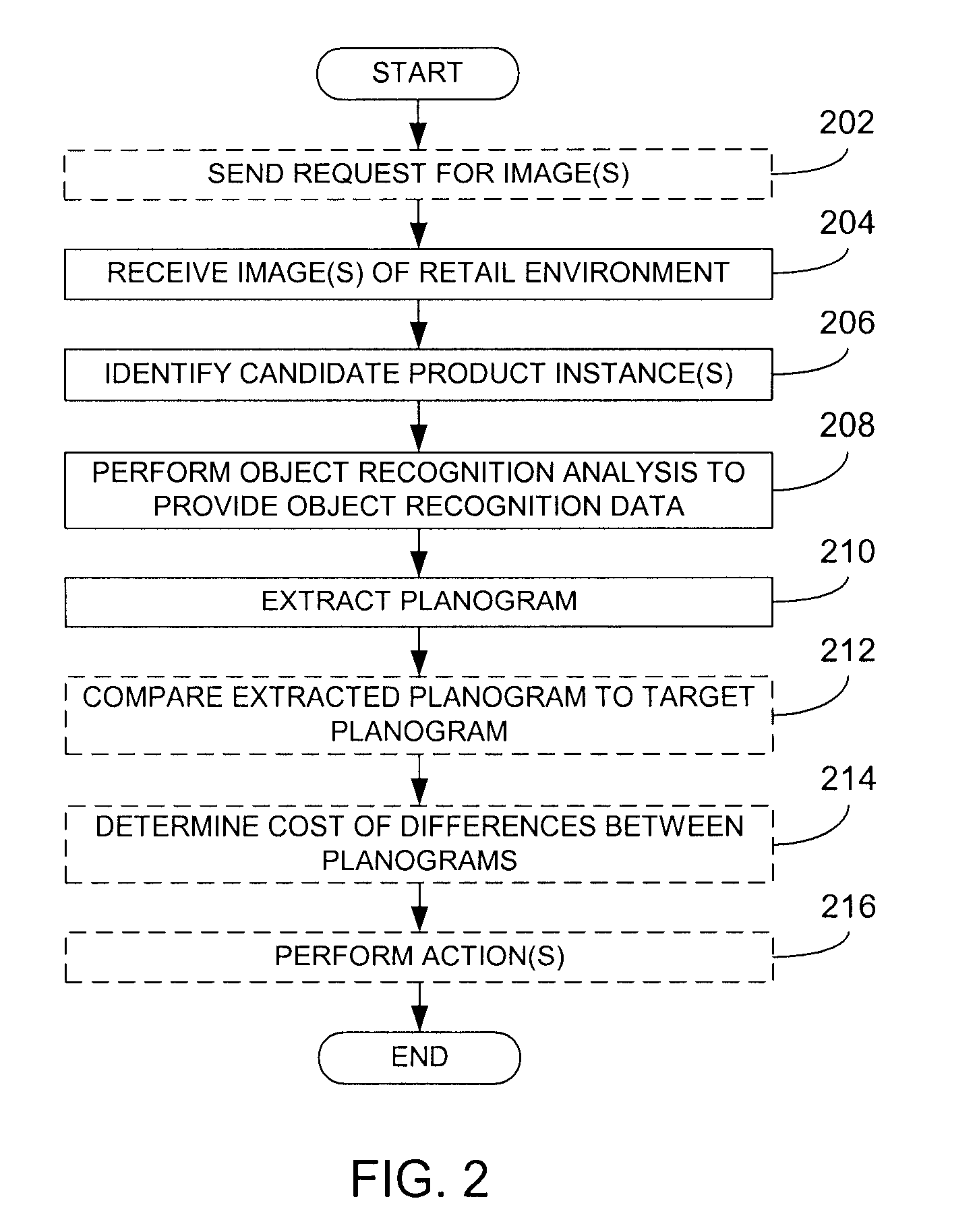Determination Of Inventory Conditions Based On Image Processing
a technology of image processing and inventory conditions, applied in the field of inventory management, can solve the problems of inconvenient and laborious management, store operators typically lose significant revenue, and continue to work hard and labor-intensively, and achieve the effect of enhancing efficiency and effectiveness of operations
- Summary
- Abstract
- Description
- Claims
- Application Information
AI Technical Summary
Benefits of technology
Problems solved by technology
Method used
Image
Examples
Embodiment Construction
[0019]A more detailed description of the various embodiments of the present invention is provided with further reference to FIGS. 1-10. Referring now to FIG. 1, a system 100 is illustrated comprising one or more image capture devices 104 deployed within an inventory environment 102. Within the inventory environment 102, a variety of products 106 are displayed on various product support devices 108. The image capture devices 104 communicate with an image server 110 via a first network 112. Although illustrated as being outside the inventory environment 102, the image server 110 may be deployed within the inventory environment 102. The image capture devices 104, which may comprise still image or video cameras that can be rotated, panned, etc. may be mounted at one or more locations within the inventory environment 102. Alternatively, or additionally, the image capture devices may comprise relatively mobile (potentially wireless) still image or video cameras mounted on any of a number ...
PUM
 Login to View More
Login to View More Abstract
Description
Claims
Application Information
 Login to View More
Login to View More - R&D
- Intellectual Property
- Life Sciences
- Materials
- Tech Scout
- Unparalleled Data Quality
- Higher Quality Content
- 60% Fewer Hallucinations
Browse by: Latest US Patents, China's latest patents, Technical Efficacy Thesaurus, Application Domain, Technology Topic, Popular Technical Reports.
© 2025 PatSnap. All rights reserved.Legal|Privacy policy|Modern Slavery Act Transparency Statement|Sitemap|About US| Contact US: help@patsnap.com



